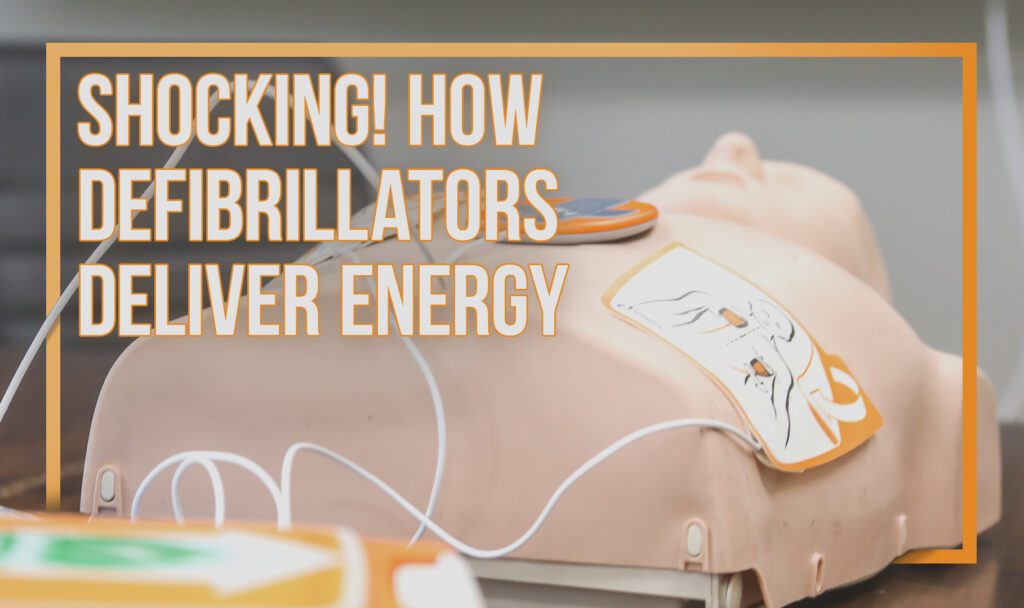Blog
Shocking! How Defibrillators Deliver Energy, and why they work

Today I just wanted to briefly discuss a few different terms that you hear around the medical industry quite often. We sell units that come with many options; buying a cardiac monitor (defib as it’s commonly referred to) can be much like purchasing a car! So today, we will go over the different ways we deliver energy to a patient to correct a cardiac arrhythmia (a rhythm that is not normal and can be lethal if not treated).
AED’s:
We see these all around our community on the wall in churches, businesses, retail stores, gyms, and other locations. They come in semi-automatic and fully automatic. The only difference here is if you must physically push a button on the unit to deliver a shock. The fully automatic units do everything up to administering the shock. These units recognize only two different cardiac arrhythmias; Ventricular fibrillation and ventricular tachycardia. These two particular arrhythmias are life-threatening rhythms that result in ineffective ventricular contractions. If left untreated, these rhythms result in death. An AED reads and analyzes the rhythm to determine if a shock is needed. The goal of the “shock” is to deliver a dose of energy that depolarizes a large portion of the heart muscle, ending the arrhythmia.
As a result, the hope is that the sinoatrial node, which is the body’s natural pacemaker, will re-establish a normal sinus rhythm. A defibrillator cannot restart a heart that is asystole (flatline). This is the reason that sometimes an AED may advise “no shock indicated.” Someone can be suffering from ventricular tachycardia and still be conscious and have a pulse. The AED does not know if the patient is conscious. Therefore this is the reason an AED is only placed on an unconscious patient. AED’s are set by the manufacturer to deliver a specific “dose of energy,” and the provider or layperson can not change this.
Manual defibrillator:
We sell units, such as the LP 15, LP 20, LP 20e, Zoll X Series, Zoll R Series, Philips Tempus, that deliver “Manual Defibrillation.”
Manual defibrillators have capabilities that AEDs do not have, such as pacing, synchronized cardioversion, and all other treatment tools. Examples of these other tools include electrocardiogram (Basic ECG monitoring), SpO2 (this shows the percentage of oxygen in our blood), SpCO2(this reading shows the percentage of carbon dioxide in our blood), SPCO (percentage of carbon monoxide in the blood), NIBP (non-invasive blood pressure), and IBP (invasive blood pressure monitoring. This is where a catheter is placed inside an artery. The catheter has a sensor, and the pressure can be obtained inside the artery if the unit has the capability).
Another significant difference between a manual defibrillator and an AED is that the provider can adjust the energy setting. Various ACLS algorithms may be used in conjunction with the defibrillator during treatment for sudden cardiac arrest, depending on the type of arrhythmia present. The provider will use the electrocardiogram (ECG) reader to diagnose the condition and determine the defibrillator’s appropriate settings (the energy is called joules).
External Cardiac Pacing (Transcutaneous pacing):
This is a technology used to treat a slow heart rhythm. It allows for a provider to temporarily pace a heart by delivering controlled pulses of electric current. Pacing should not be confused with defibrillation. Instead of providing one big shock, it corrects a slow heart rate by delivering controlled pulses to mimic the desired rhythm.
Synchronized Cardioversion:
This treatment corrects a patient’s heart rate by delivering shocks that are timed with particular points of the cardiac cycle. When looking at a basic ECG, you will see a large complex called the QRS complex. This is the time that the left ventricle is depolarized, and we have a heartbeat.
When a monitor is instructed to begin synchronized cardioversion, it will listen to the patient’s heartbeat and flag R waves while avoiding T waves. The provider will adjust the energy setting to the desired energy. When the shock button is pressed, the monitor will only deliver a shock on the R wave. If the sync button were not pressed, it would be possible for the provider to shock a patient on the T wave. If this happens, it can cause the patient to go into cardiac arrest instantly.
If you have any more questions about the functions of AEDs or Manual Defibrillators, give us a call:
Local Phone: 731.554.1223
Toll-Free (US Only): 866.304.1956

Trent Harris, CCEMT-P
Sales Manager
